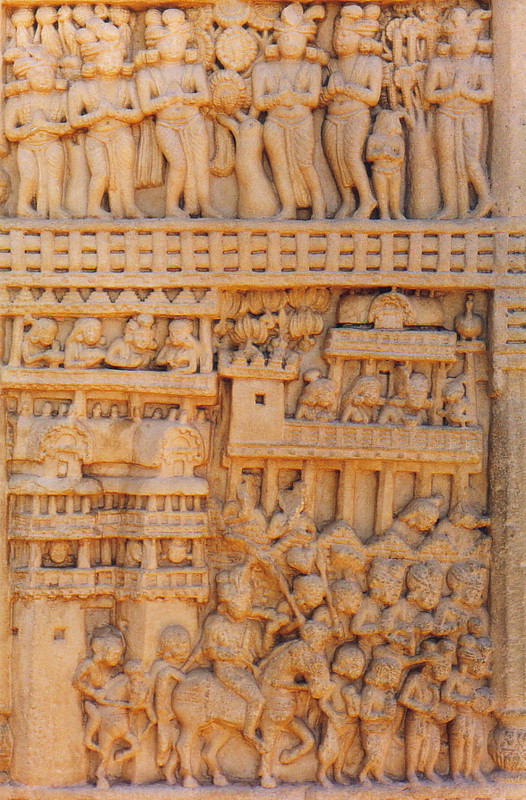
Sanchi is a hill topped with some spectacular Buddhist ruins, 'among the best in India' according to my guidebook (which says more about the other Buddhist ruins in India than I care to know). Certainly the ruins are Buddhist and they're reasonably interesting, but after my recent visits to the astonishing rock temples of Ellora and the deeply atmospheric Mughal fortresses of Mandu, stupas aren't quite as thrilling. Dome-shaped and topped with strange spires that look like something out of Flash Gordon, stupas just sit there: you can't go inside them, you can't climb them, and although they look pleasant, so does crazy paving, and I wouldn't cross a continent to look at a patio.

The surrounding area is peaceful – which is why the Emperor Ashoka chose it in the third century BC as a site for his Buddhist stupas – and it's certainly a wonderful place to visit, but as for the architecture (World Heritage stuff, no less) I didn't think it was that special. This is a pity, but perhaps it unintentionally reflects a change in my attitude towards Buddhism, something I was pretty fond of back in the bush of Australia, where I lapped up books on the stuff and even did a bit of meditation.
The problem is that Buddhism is based around the precept that life is a piece of shit, and where that idea was particularly appealing at a time of my life when I was leaving home because I wasn't happy with things as they were, it doesn't hold much water nowadays. I keep thinking of that famous Chinese painting called 'The Three Masters', where each of the inventors of the three main eastern religions – Confucius (Confucianism), Gautama Buddha (Buddhism) and Lao-Tse (Taoism) – has just dipped his finger in a vat of vinegar and stuck it in his mouth. Confucius, who believes that life should be governed by rules, regulations and a reverence of ancestors, has a sour expression, as if to say that this taste is disgusting and that something should be done about it; Buddha has a bitter expression on his face, a reflection that he believes life to be an endless cycle of suffering, escapable only by attaining enlightenment through meditation and a purity of spirit, and that the vinegary taste is just a confirmation of this attitude; and finally Lao-Tse is smiling, because he reckons life is a pretty good thing, and everything in life has its purpose, its beauty and its relevance.

From this I tend to think that Taoism is the best sounding of the lot, but I have yet to do any hardcore research and I'm not really in the mood for religious discourse at the moment; at present I'm reading the Ramayana, the mythical story of Rama, and it's as good a read as the stories of ancient Greece or the wonderful tales of King Arthur. Then I've got the Arabian Nights, a perfect accompaniment to the buildings I've been exploring, followed by Lamb's Tales of Shakespeare, a children's book that contains fifteen of the bard's plays retold in shortened form for children, which is a good way of learning the plots without having to wade through the real thing. India, being the second largest publisher of English books after America and the UK, has some wonderful options, and all at knockdown prices, of course.

Vaguely related to this, I've developed a new sitting posture. I used to kneel whenever I sat on the ground, which is perhaps a reflection of my Christian upbringing; when I started growing my hair and reading about meditation and Buddhas, I started to sit cross-legged; and now that I'm in India I sit like the Indians, after weeks of frustrating practice.
The Indians squat down by the usual method of bending the knees and lowering your bum until it is on top of your heels, but they go a little bit further and manage the same position with the soles of their feet totally flat on the floor.
Try it: I bet you end up with your heels off the floor, with all the weight on the front ball of your feet. Well after lots of practice on, of all things, the good old squat toilet, I can now sit with my feet flat on the floor, with my bottom off the ground and with pretty reasonable balance. It's surprisingly comfortable, and that's why you see Indians everywhere squatting down for hours, looking at ease in a position that looks decidedly painful. So now you know...